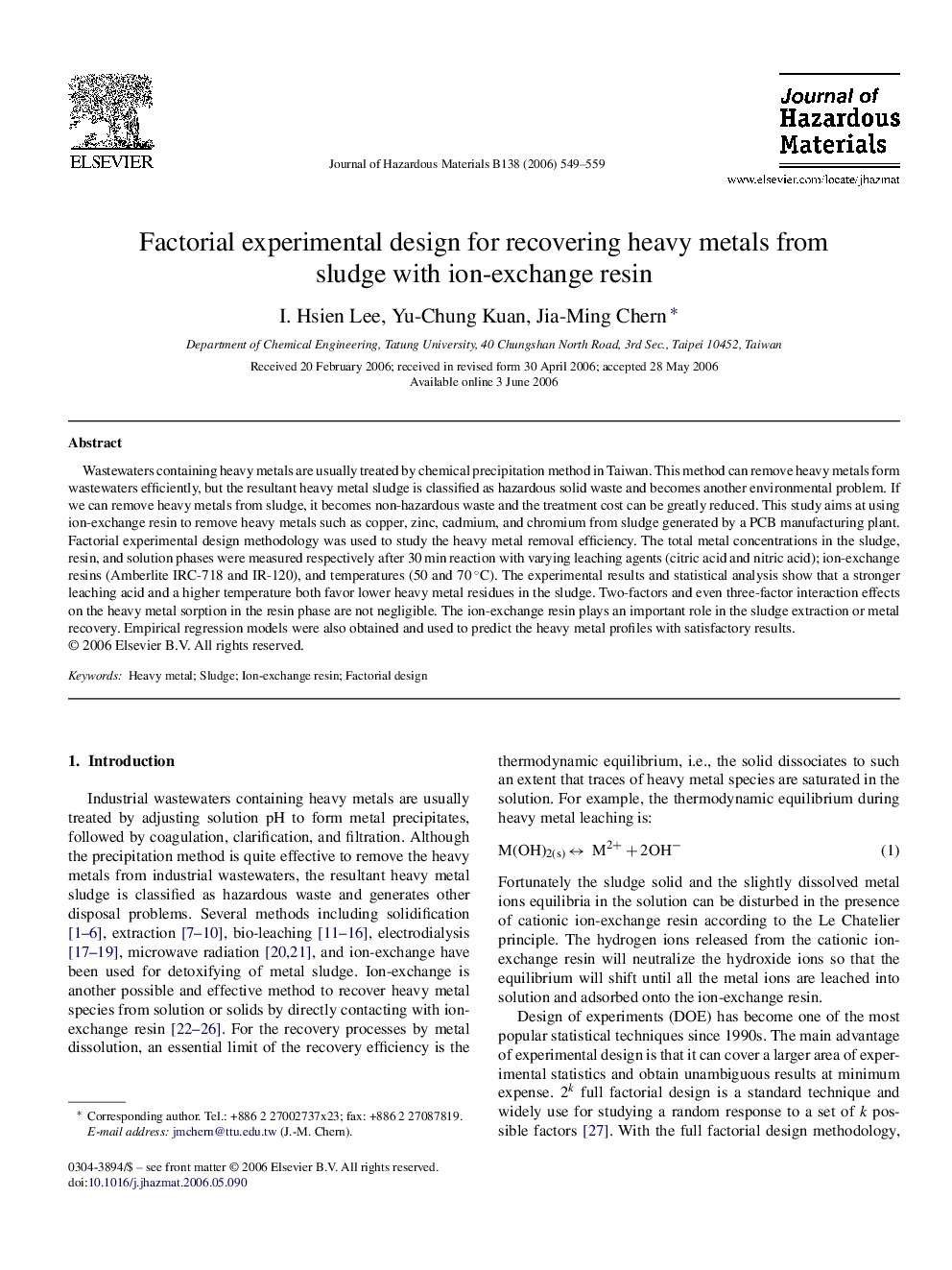| Article ID | Journal | Published Year | Pages | File Type |
|---|---|---|---|---|
| 585067 | Journal of Hazardous Materials | 2006 | 11 Pages |
Abstract
Wastewaters containing heavy metals are usually treated by chemical precipitation method in Taiwan. This method can remove heavy metals form wastewaters efficiently, but the resultant heavy metal sludge is classified as hazardous solid waste and becomes another environmental problem. If we can remove heavy metals from sludge, it becomes non-hazardous waste and the treatment cost can be greatly reduced. This study aims at using ion-exchange resin to remove heavy metals such as copper, zinc, cadmium, and chromium from sludge generated by a PCB manufacturing plant. Factorial experimental design methodology was used to study the heavy metal removal efficiency. The total metal concentrations in the sludge, resin, and solution phases were measured respectively after 30 min reaction with varying leaching agents (citric acid and nitric acid); ion-exchange resins (Amberlite IRC-718 and IR-120), and temperatures (50 and 70 °C). The experimental results and statistical analysis show that a stronger leaching acid and a higher temperature both favor lower heavy metal residues in the sludge. Two-factors and even three-factor interaction effects on the heavy metal sorption in the resin phase are not negligible. The ion-exchange resin plays an important role in the sludge extraction or metal recovery. Empirical regression models were also obtained and used to predict the heavy metal profiles with satisfactory results.
Related Topics
Physical Sciences and Engineering
Chemical Engineering
Chemical Health and Safety
Authors
I. Hsien Lee, Yu-Chung Kuan, Jia-Ming Chern,
